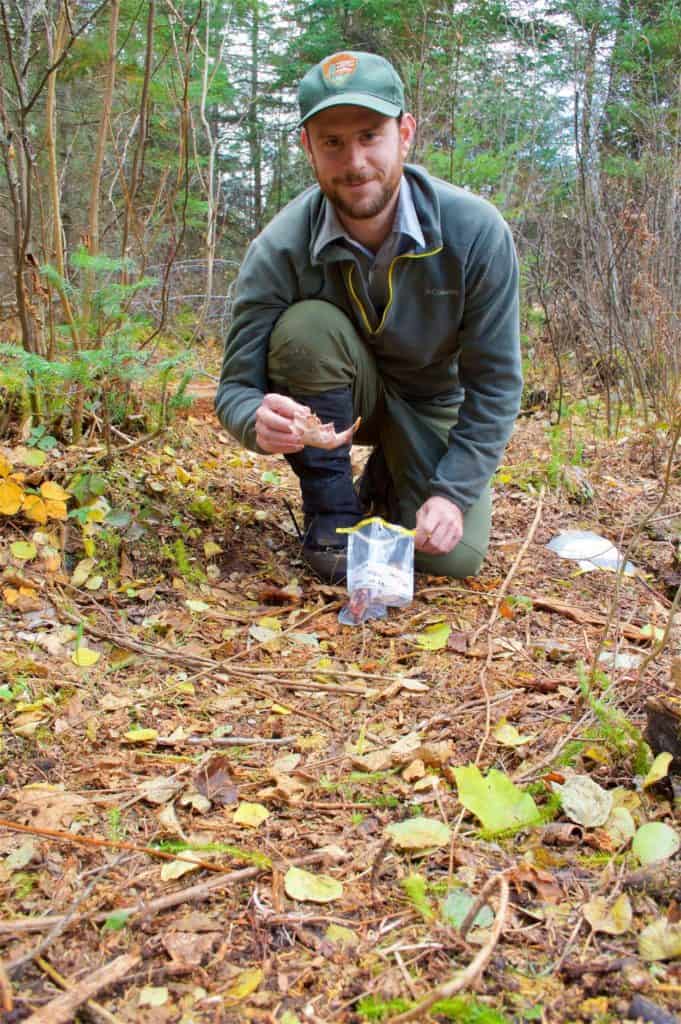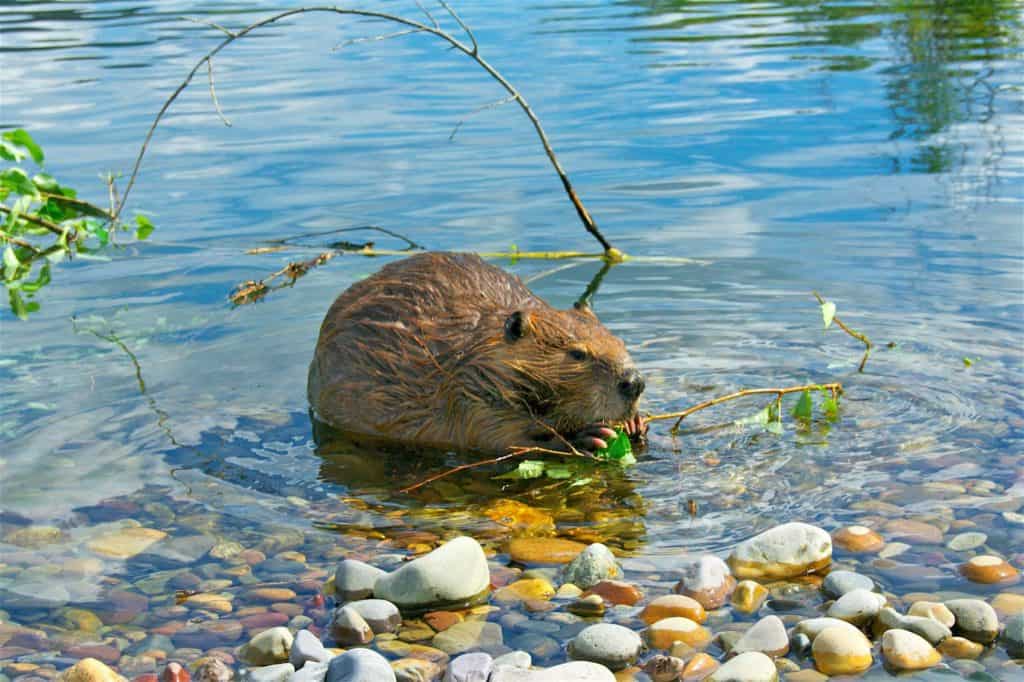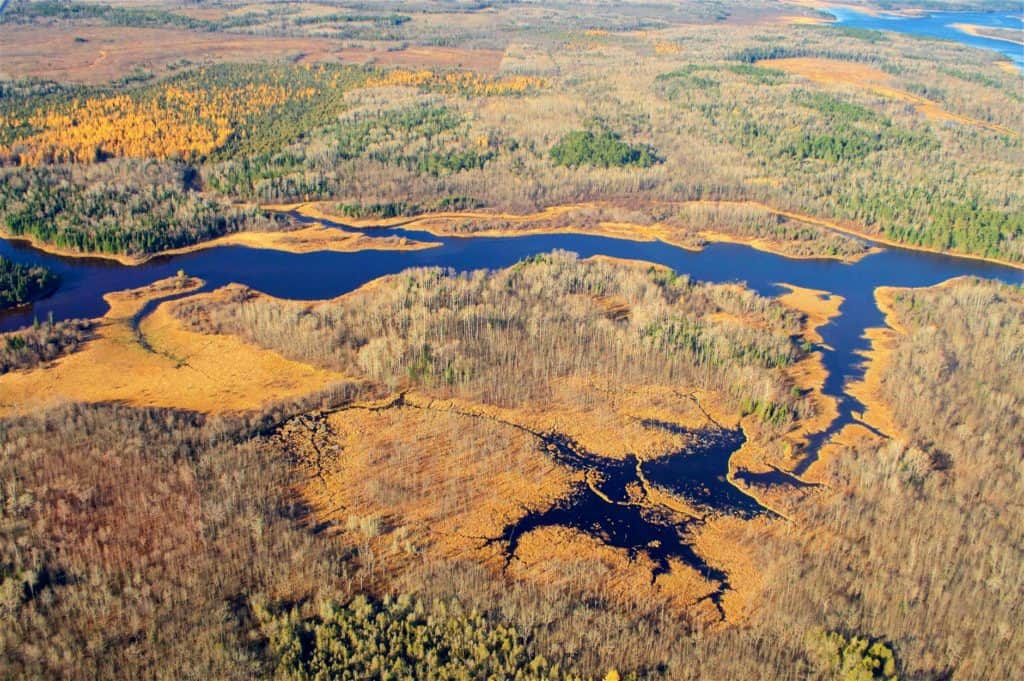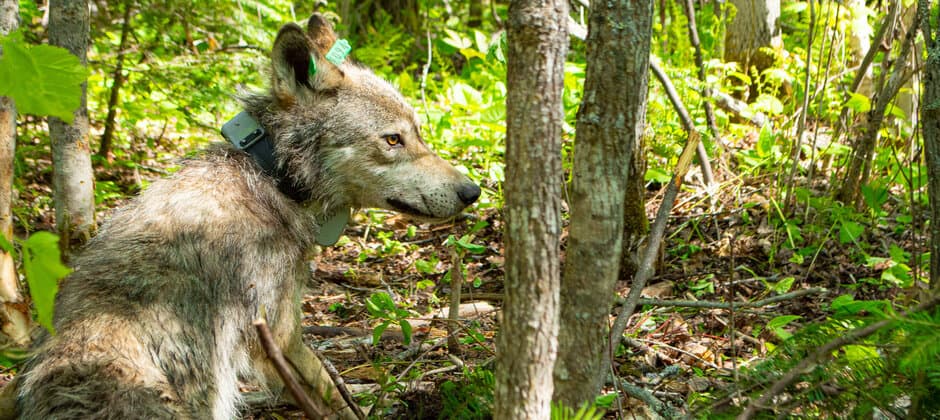Share this article
Wolves alter Minnesota wetlands
Wolves in Minnesota’s Voyageurs National Park are changing the wetlands ecosystem there, researchers found, due to their appetite for beavers.
“Wolves eat a lot of beavers, especially in Voyageurs, where there are a ton of beavers and lot of wolves,” said Thomas Gable, lead researcher on the Voyageurs Wolf Project, a collaboration between the University of Minnesota and Voyageurs National Park, and the lead author of the study recently published in Science Advances. “Beavers have often been ignored by wolf biologists, in part because beavers are not as important on a socioeconomic level as species like deer.”
But beavers are an ecosystem engineer, creating maintaining and altering wetlands, which are important for many wildlife species.

Tom Gable collects a beaver jaw at a site of wolf predation. Credit: Tom Gable
Just three weeks into his fieldwork as a master’s student in 2015, Gable saw how dispersing wolves (Canis lupus) were killing juvenile beavers (Castor canadensis) in the park. The region’s wolves had come off the endangered species list just three years earlier, and Gable wondered how they were impacting the park’s beaver populations. Previously, biologists struggled to find evidence of wolf predation on small prey during the summer—they often don’t leave many traces behind for researchers to find.
Gable and his colleagues decided they were up for the challenge. After collaring wolves in the park, they watched for the animals to spend at least 20 minutes in a spot, then moved in searching for signs of a kill.
The search “oftentimes involved getting down on your hands and knees, literally, looking through vegetation for tufts of fur or intestinal content,” Gable said. Since wolves in the park typically only eat beavers and deer fawns during summer, he said, identifying the fur was an easy way to tell which animal was preyed on. The next step was looking more closely at where and how these wolf-beaver interactions occurred.
Culminating five years of intensive wolf-beaver interactions, the recent study confirmed initial anecdotal evidence that wolves stopped beavers from creating their ponds, which raised questions about what that may mean for wetland creation in the larger ecosystem.

A beaver chews on a stick in Voyageurs National Park. Credit: Tom Gable
“By 2019, we were able to look at this in a quantitative sense, as opposed to several one-off observations, which allowed us to put this all together,” Gable said.
The team found that wolves often killed juvenile beavers that were setting out to create a dam in a new stream or repair a dam in an old, abandoned pond that had drained. Beavers are particularly vulnerable to predation in these low waters, he said, and wolves have an easy meal.
Once the beavers are gone, the ponds vanish with them. “The dam deteriorates and the pond drains,” Gable said. “Not only that, but our data shows that no other beaver ends up settling in those spots.” As a result, researchers found, wolves were altering the landscape. “It shows wolves, indeed, are connected to wetland creation,” Gable said.
The researchers determined that wolves prevented about 88 ponds per year from forming in the Greater Voyageurs Ecosystem. “That’s a drop in the bucket” in the larger ecosystem,” Gable said. “But on a localized level, it totally changes the environment.”
This mechanism is likely also occurring in other areas where wolves prey on beavers, Gable said. While not affecting beaver population size, wolves are impacting their distribution, he said, reshaping the wetlands they occupy and creating more diverse landscapes.

Beaver dams and ponds seen from above. Credit: Tom Gable
The team also found other surprises. Previous work found wolves tend to outrun and outlast their prey, but their research showed wolves ambushed beavers, often sitting and waiting for hours at a time before springing.
“Wolves do, in fact, ambush their prey, but can switch back and forth between ambush strategies to catch beavers and then cursorial strategies to catch prey like deer,” Gable said. “It’s quite fascinating.”
“I think the value in a lot of our work is understanding the functional role of predators in ecosystems, whether or not that information is used as a justification for predator reintroduction or conservation,” he said. “That’s up to managers. But it’s really important for managers to have a sound understanding of how the presence of large predators impacts the ecosystem.”
Header Image:
Researchers collared wolves and examined areas where they lingered in search of clues of a beaver kill.
Credit: Tom Gable








